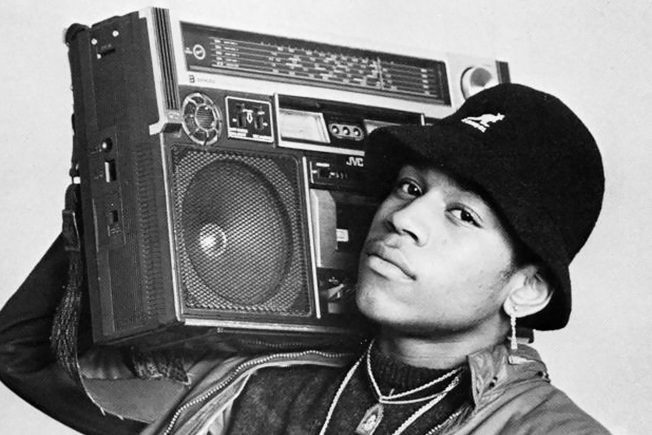What are the best analog EQ plugins? This Icon Picks roundup features a selection of musical sounding analog-style EQ emulation plugins used to sweeten your music.
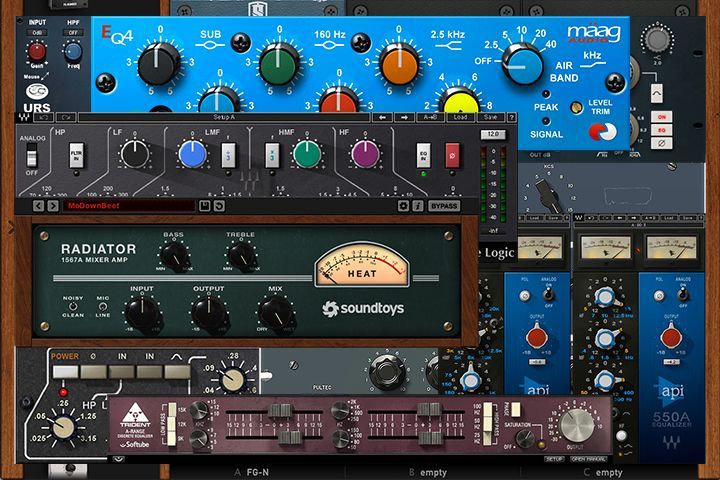
What are Analog EQ Plugins?
Analog modeled equalizers emulate the circuity and musical character of their classic hardware counterparts. These types of equalizers are used to add, warmth, presence, punch, and sheen to your music. In other words, they make everything sound better!
In the modern digital era, there is an overwhelming amount of available analog-based EQ plugins. This roundup breaks down the selection to ten sought-after analog-modeled equalizers from a variety of companies.
1. Universal Audio | Pultec Passive EQ Collection
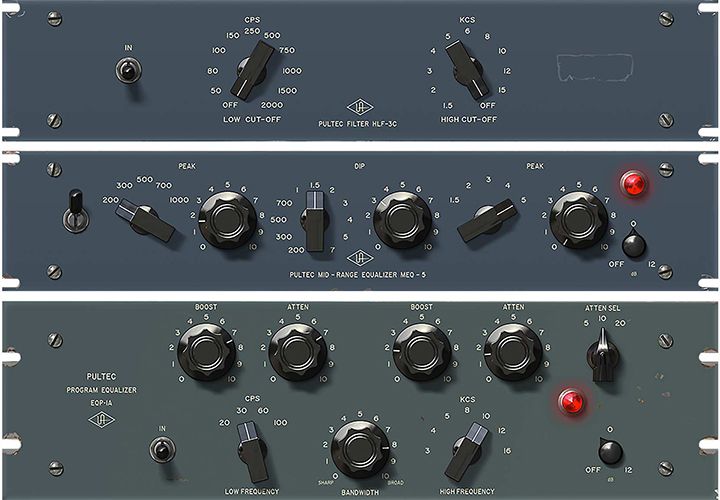
The Pultec Passive EQ Plugin Collection for UAD-2 and Apollo hardware includes all three emulations of Pulse Techniques’ legendary tube EQs. Most notably, is the famed two-band EQP-1A. This Pultec equalizer has injected its sought-after sound on countless hit records since the ’70s. The EQP-1A is one of the most musical EQs ever invented. It produces a wide-open sound that gives your tracks bass enhancement, silky air, and addictive warmth. Moreover, Pultec EQs imparts analog ‘magic’ to your tracks by merely having signals pass through them without any EQing.
2. Waves | SSL G-Equalizer

This four-band equalizer emulates the classic G 292 EQ found on Solid State Logic’s 4000 Series analog mixing consoles. The SSL G and E equalizers are famous for their unique sound and punch. Many engineers choose to use the E-Channel EQ for detail work and mixing, then employ the SSL G-Equalizer to shape and give character to the sound. However, deploying these EQs will depend on your material as well as your taste and style. Try this gem on your drums and hear them pop!
3. Slate Digital | FG-N
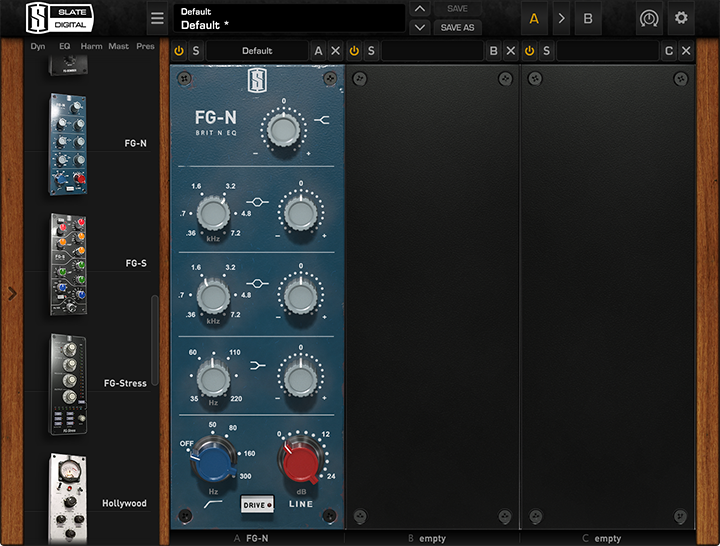
The FG-N is an impressive recreation of one of the iconic Neve 1073 Channel Amplifier. The original Neve 1073 is easily one of the most revered preamps and EQ circuits ever designed. Introduced in 1970, this Class-A British equalizer has been delivering the unique Neve sound on some of the most famous recordings for over 40 years. The FG-N perfectly captures the big, punchy sound of the 1073, including the rich harmonics and saturation that naturally occur when the equalizer is in use. Moreover, the original hardware only contained one mid-band, but Slate added another to make the Brit-N even more versatile. This equalizer is lush and fat, and it sounds great on everything you send through it!
4. Softube | Trident A-Range

The Trident A-Range equalizer models the legendary 4-band active EQ found on Trident A-Range desks. Only thirteen A-Range consoles were ever made, making this EQ a holy grail for many sound engineers and producers around the world. The Trident A-Range is famous for its unique band interactions and distinct cut-filter combinations. Moreover, the Trident A-Range is a highly characteristic equalizer that is very musical. It sounds great on kick drums, bass, and vocals.
5. Soundtoys | Radiator

Radiator is a dual drive tube input channel and EQ, based on the classic Altec 1567A tube mixer from the 1960s. The original Altec 1567A hardware was a rack-mounted five-input tube mixer with removable transformers, a simple two-knob EQ, an unmistakable green faceplate, and a whopping 97 dB of gain. Most notably, the 1566A and 1567A played a big part in shaping the early ‘sound’ of Motown between 1961 to 1964. Capturing the distinctive warmth and punch of the original hardware, Radiator delivers a colored and gritty sound with a heap of good old-fashioned hardware noise. Run your vocals through this EQ, adjust the Mix control and hear them scream!
6. IK Multimedia | T-RackS EQ 81
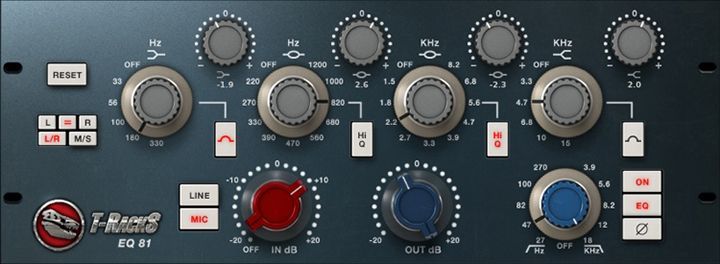
The 4-band T-RackS EQ 81 is another Neve emulation that delivers the legendary British warmth and tone. Modeled after the Neve 1081 Classic Console EQ, T-RackS EQ 81 captures the punch, presence, and sheen that has become synonymous with the ‘Neve Sound.’ This EQ is particularly useful for precise EQing while also injecting your tracks with clarity, sheen, warmth, and punch. Moreover, the EQ 81 sounds great on vocals and acoustic guitars. It also excels at injecting punch and presence to drums, bass, and piano.
7. Maag Audio | EQ4

The Maag Audio EQ4 is another legendary equalizer that has lent its signature sound on countless hit records. The EQ4 provides unparalleled transparency and top-end presence while maintaining a natural sound. The EQ4 features Maag’s famed ‘Air’ Band control, making it highly regarded for vocal sweetening. This musical EQ also adds natural presence to acoustic guitars, overheads, and anything else that needs the top-end elevated.
8. Universal Audio | Harrison 32C

The Harrison 32C Channel EQ plugin for UAD-2 hardware and Apollo interfaces is an expert emulation of this classic, character-rich, four-band channel EQ. Partnering with Harrison Consoles Ltd. and engineer Bruce Swedien, UAD has recreated the Harrison four-band 32C channel EQ from Sweden’s own Harrison 32 Series console — the same console behind Michael Jackson’s Thriller.
Renowned for its colorful and smooth high-end response, the Harrison 32C sounds amazing on everything. Polish lead vocals and drums with silky analog texture, sculpt electric guitars to sit in a mix and accentuate resonances on electric pianos, strings, and more.
9. Waves | API 550
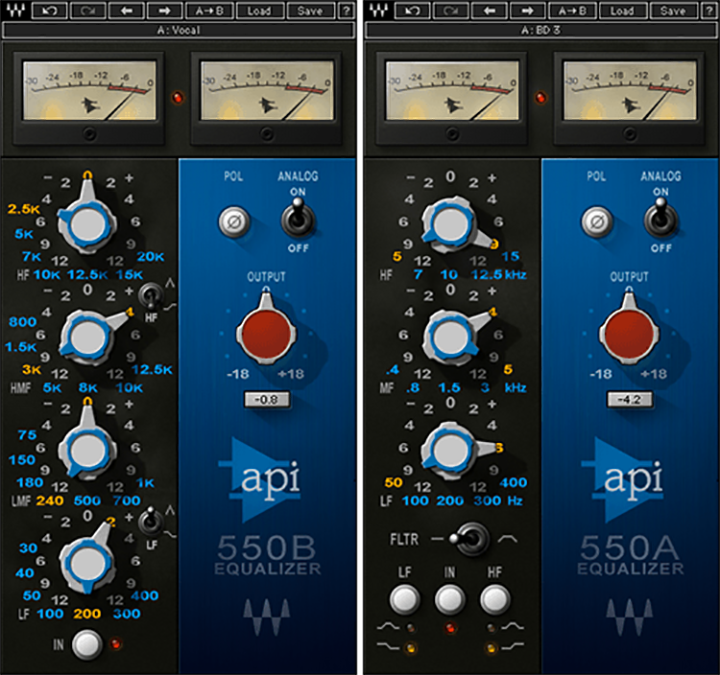
The Waves API 550 Collection gives you two amazing classic equalizers. Modeled on the 1960’s legend, the three band API 550A EQ delivers a sound that has been a hallmark of high-end studios for decades. The four band API 550B is invaluable as both a problem solver and a sweetening device. With their vast range of tonal possibilities, the API 550A and 550B are a pair of versatile EQs that deliver that one-of-a-kind API sound. Try one of these equalizers on a piano track. They add definition, warmth, and presence in a musical way.
10. URS | N Series
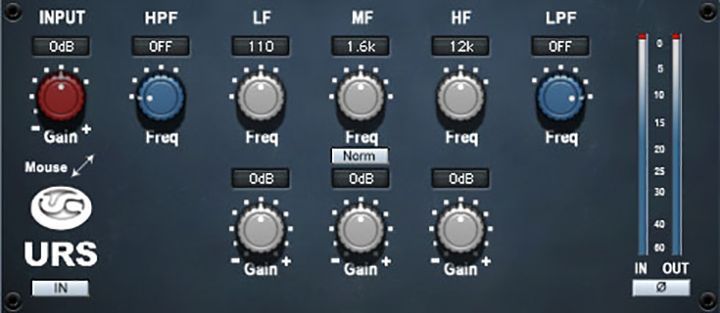
The URS N Series equalizer digitally recreates the sound of Neve’s 1084 vintage five-band equalizer. The Neve 1084 is known for delivering an incredibly fat, smooth sound. Like the original 1084, the URS N series equalizer is very broad-banded and musical. It is also most widely known for sweetening drums and bass with a rich, analog vibe.

Turn your passion for music into a Profession: Learn more about our Music School Programs!
MORE ARTICLES FROM THE ICON BLOG

FIND YOUR SOUND, HONE YOUR CRAFT:
Are you ready to turn music into a career? ICON prepares students to become music producers, composers, performers, recording artists, professional DJs, and entrepreneurs in the entertainment industry. Click below to get information about our award-winning programs:

